
New Photos
June 23, 2007
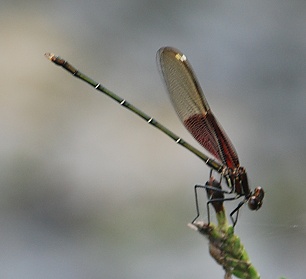 |
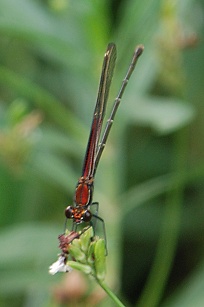 |
| Broad-winged damselflies perch with their wings tightly folded, just like those with narrower wings. The American Rubyspot's size, brilliant red head and thorax, green abdomen, and red spotted wings make it stand out. | In the lateral view, the coloration of the wings and abdomen show more clearly. These images were shot in the evening, in open shade. |
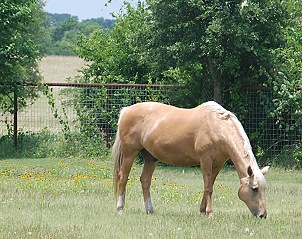 |
|
| On a sunny day, a gold horse grazing contentedly on fresh grass defines an equine idyll. | |
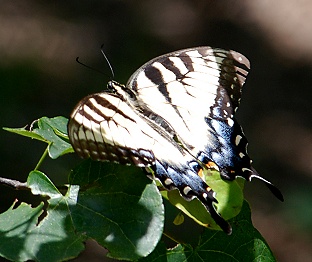 |
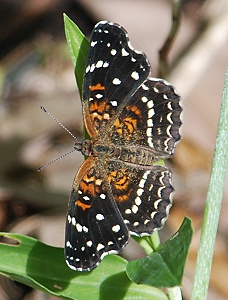 |
| This gorgeous fresh Eastern Tiger Swallowtail was more colorful than the image--the golden wings overexposed...and it was there for only one shot. | Crescent butterflies are small, so their intricate, beautiful patterns aren't often seen. They fly low to the ground, and often perch with their beautiful wings outspread, as here. |
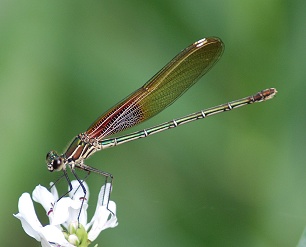 |
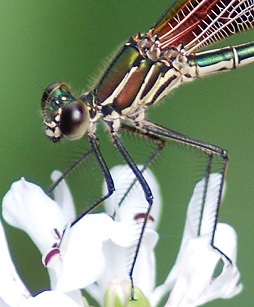 |
| I saw several of these American Rubyspot broadwinged damsels at the creek--on Friday, backlit by sunglow but not actually in the sun, and on Saturday, in full morning sun. Damsels, like dragonflies, come out as adults without their full adult color, and gain it over hours to days--I think these were all young, because of the amber on the wings (which is supposed to be clear later, with red on the part of the wing nearest the body.) This is a morning shot of one perched on the flower of water willow...on Friday I had only the zoom lens, but on Saturday morning I took along the big lens and the monopod. | A closer-in view of the same image, showing the gorgeous coloring of the head and thorax. |
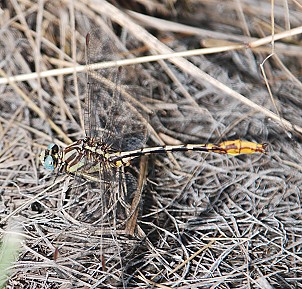 |
|
| This fellow, a Sulphur-tipped Clubtail, Gomphus militaris, is definitely in the clubtail group--the eyes are widely separated and the end of the abdomen has a widened shape. It was either perching on the ground or flying low (under 2 feet) over the mowed grass of the walking paths. It preferred to perch on the ground below the level of the mowed clumps of grass, making both approach and photography difficult. | |
 |
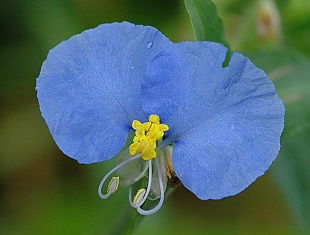 |
| This common Texas spring wildflower comes in various combinations of yellow with red/brown--more or less of the red-brown, or even all yellow. | Dayflowers are closely related to spiderwort, but they're blue instead of purple, and the third petal is much reduced and whitish (just visible here.) Like the spiderwort, they grow wild and often seem to like the protection of a prickly pear--rainwater running off the waxy prickly-pear pads provides extra moisture--as the pads also provide shade--for several flowering plants. |
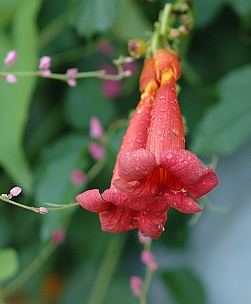 |
|
| Trumpet creeper provides nectar for hummingbirds as well as ants, and covers everything with lush green in rainy years. Here it's sharing a fence with Queen's Crown (that string of delicate pink flowers behind it and one of the many bindweed/morning glory species found wild around here. | |
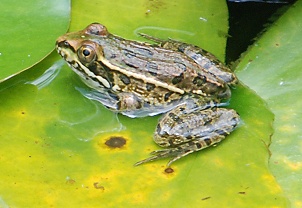 |
 |
| On the hot sunny days between rains, young leopard frogs like to sit on lily pads just under water and stay cool. | Sometimes they seem to be hiding...this one peeked out at me from behind an upturned lily pad. |
![]()

